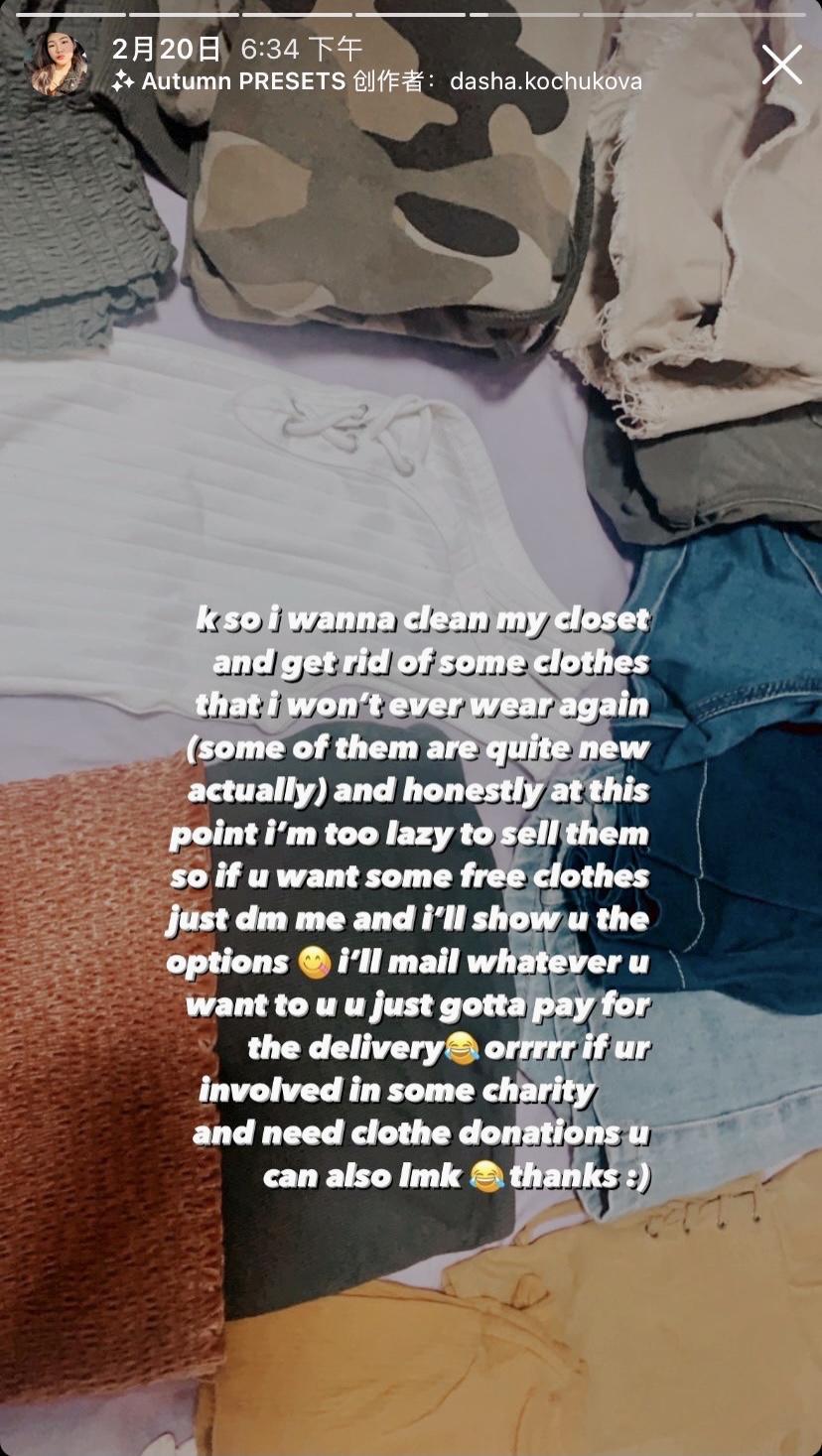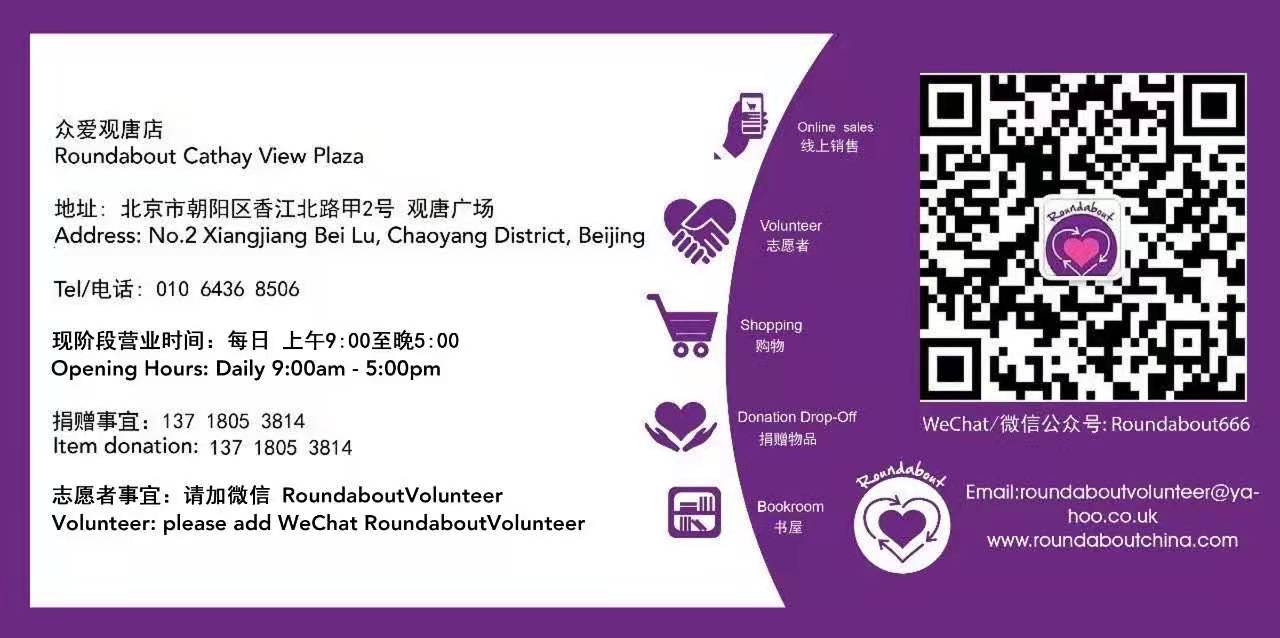About a month ago, I posted that I’ll be giving away some of my unwanted clothes for free on my Instagram story since they’ve been sitting untouched in my closet for way too long. Shortly after the story was posted, people started replying to my story asking if they could have them. I felt an unexplainable joy after realizing that people wanted to wear clothes that I would never wear again and it made me realize how convenient it was to recycle clothes.

Linda’s Instagram story
In an age of consumerism, our urge to purchase is evoked both by our natural desire to own what appeals to us visually and the inclination to use shopping as a coping mechanism for what bothers us. Stressed out? Shop. Failed a test? Shop. In a bad mood? Shop. We come up with all kinds of excuses to justify our compulsive purchasing habit; Vanessa Zhang, a 16-year-old student, agrees, “my desire for shopping mostly ensues when I feel stressed out or anxious, it [shopping]helps relieve some stress.”
The result of our expressive buying results in similar items repeatedly entering our households; the fashion industry is no exception. We buy far more clothes than what we realistically need, as Sofia Strelnikova (age 15), says, “Actually thinking about this, my closet is filled with clothes that I don’t know I have. Maybe not to that point, but it’s like I know I have them, but I also know I’m never going to wear them.”
The truth is that while we often get a thrilling and enraptured feeling after a shopping spree, the same feeling ceases when one is reminded of their untidy closet filled with unneeded clothes or exposed to the negative environmental impact of shopping (which happens to be often trivialized and shunned.) According to the United Nations Environment Programme, approximately 10% of the annual global carbon emission and 20% of the total wastewater in a year come from the fashion industry.
Whether you hope to help our ecosystem by reducing textile wastes or to simply save the plight of your wardrobe, I have suggested four easily attainable ways, here in Beijing, that could get you started on your journey to fashion sustainability.
1. Clothing Swaps!
“Who can say no to free clothes?” One of my followers texted me that after the clothing giveaway story I posted on Instagram. Just like what I did, you could exchange clothes with your friends through popular media platforms or simply through personal contacts. A pair of skinny jeans that you would never want to wear again could be something someone else has long-sought for but couldn’t find. What’s better than a mutually beneficial exchange, especially when it’s between you and your friends?
2. Roundabout

Since its opening in 2008, Roundabout has been a charity organization that directly passes on your donated items and sells them in their retail store to acquire funds for those in need. You are encouraged to donate second-handed items to their retail store; in fact, clothing is currently one of their biggest needs! Just make sure that your clothes are clean, stainless, and in good condition. Check out this page or follow the official Roundabout WeChat account for more information on donation details, drop-off points, and alternative ways to donate items!

3. Clothing Transformation
Transforming old clothes into new fashion could be done with simple cuts and sewing, and minimal skills are required. A large, oversized t-shirt could quickly turn into a mini top with a few meticulous changes. There are a ton of videos on YouTube and tutorials on Pinterest that could inspire you to transform your own unwanted clothes into another shape or form.
4. Textile Recycling Programs
Plenty of other recycling alternatives are also available; search up “旧衣回收” (jiù yī huí shoū) on WeChat and you’ll find a variety of clothes recycling programs that offer home pick-up services. This way, you could merely wait by the door for the courier to show up.

Indeed, the above methods can achieve some level of fashion sustainability, however, it is not to forget that none of them fully gets to the heart of the problem. The truth is that we need to simply stop buying. This by no means is to say that shopping for clothes is a sin or that we can’t purchase garments at all, but rather that we need to stop vindicating our excessive consumerism. It’s almost undeniable that buying new clothes gives us ecstasy, but perhaps this is also an indication that the natural foundation of our happiness should be reassessed. It’s time to abolish the mindset that one should buy fewer pieces of expensive clothing so that they could buy more clothes at lower prices with the same amount of money. It’s not a matter of money (though it could be argued that economizing is equally important); the ultimate goal is to buy less so that the production of clothes and textile wastes from unwanted garments could be lowered and thus reduce the demand for textile and apparel.
As a culprit of modern consumerism and overbuying, my expertise certainly does not lie in the field of sustainability. There is still so much more for all of us to learn about being environmentally friendly, but the four ways to recycle clothes provided above could be the starting points of your path to fashion sustainability, right here in Beijing.
KEEP READING: Who Pays The Price For Our Clothing? The True Cost
Images: Linda Huang, pexels




2 Comments
Pingback: The Emperor's New-Old Outfits: Your Guide To a Sustainable Wardrobe in Beijing - bellevbistro
Please credit our student correspondent Linda Huang.